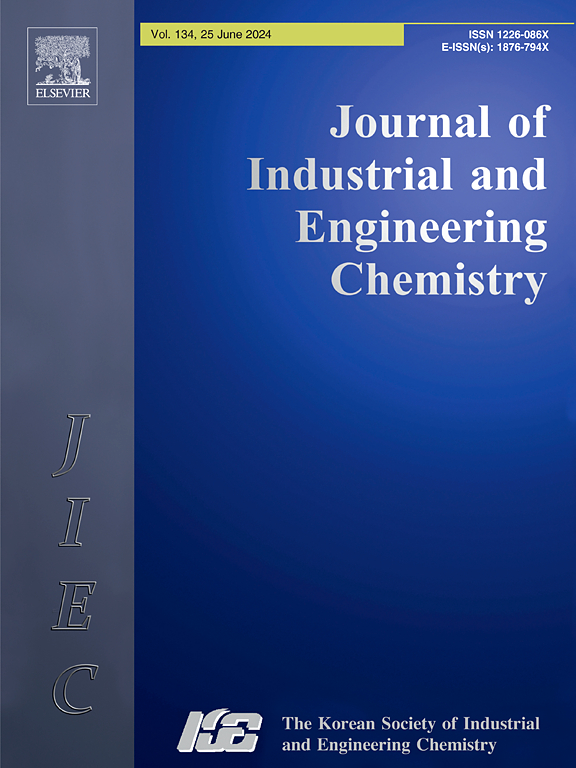一种针对溶酶体和脂滴具有大斯托克斯位移的新型荧光探针及其在细胞成像中的应用
IF 5.9
3区 工程技术
Q1 CHEMISTRY, MULTIDISCIPLINARY
Journal of Industrial and Engineering Chemistry
Pub Date : 2024-11-19
DOI:10.1016/j.jiec.2024.10.065
引用次数: 0
摘要
脂滴和溶酶体是在细胞代谢中起重要作用的重要细胞器。因此,同时研究脂滴和溶酶体具有重要的价值。基于分子内电荷转移(ICT)原理设计了一种新型荧光探针BTD-Lyso。探针呈典型的D-π-A结构,以苯并噻唑为电子受体,啉为电子给体。实验结果表明,BTD-Lyso能够检测微环境中极性的变化。此外,该探针具有较大的Stokes位移(300 nm)、优异的选择性、极性灵敏度和光稳定性。此外,由于其低细胞毒性,可以很好地靶向脂滴和溶酶体,因此可以成功地用于细胞成像。本文章由计算机程序翻译,如有差异,请以英文原文为准。

A novel fluorescent probe with a large Stokes shift targeting lysosomes and lipid droplets and its application to cellular imaging
Lipid droplets and lysosomes are crucial organelles that play significant roles in cellular metabolism. Therefore, studying both lipid droplets and lysosomes simultaneously holds great value. A new fluorescent probe BTD-Lyso was designed based on the principle of intramolecular charge transfer (ICT). The probe was formed with a typical D-π-A structure, and it used benzothiadiazole as the electronic acceptor and morpholine as the electronic donor. The experimental results showed that BTD-Lyso was able to detect the change of polarity in the microenvironment. Furthermore, the probe showed a large Stokes shift (300 nm), excellent selectivity, polarity sensitivity, and photostability. In addition, it could be successfully utilized in cellular imaging due to its low cytotoxicity and could target lipid droplets and lysosomes well.
求助全文
通过发布文献求助,成功后即可免费获取论文全文。
去求助
来源期刊
CiteScore
10.40
自引率
6.60%
发文量
639
审稿时长
29 days
期刊介绍:
Journal of Industrial and Engineering Chemistry is published monthly in English by the Korean Society of Industrial and Engineering Chemistry. JIEC brings together multidisciplinary interests in one journal and is to disseminate information on all aspects of research and development in industrial and engineering chemistry. Contributions in the form of research articles, short communications, notes and reviews are considered for publication. The editors welcome original contributions that have not been and are not to be published elsewhere. Instruction to authors and a manuscript submissions form are printed at the end of each issue. Bulk reprints of individual articles can be ordered. This publication is partially supported by Korea Research Foundation and the Korean Federation of Science and Technology Societies.

 求助内容:
求助内容: 应助结果提醒方式:
应助结果提醒方式:


